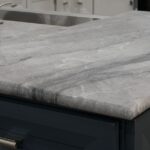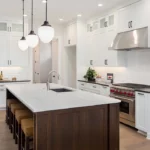Among all natural stones widely available for inner decoration, marble always sticks out from the rest. That is due to several reasons – including its beauty, durability, major creative possibilities, design versatility, resale value, and cost-benefit. In this sense, it’s not hard to see why marble countertops are so highly praised in the general market, enchanting homeowners ever since their inception some time in the past century.
And if you’re planning on investing in a home renovation, you’ve probably considered them to adorn your new kitchen or bathroom. In this complete guide, you can read everything you need to know about marble countertops – so that you make a smart, definitive decision when browsing through the many online catalogs out there.
Read as well: Cultured Marble Countertops – Pros and Cons
The Benefits of Marble Countertops
Marble has been a staple top choice for many interior designers. After all, it has a rich history that dates back to ancient Greece and Rome, where it was prominently used in sculptures and architecture. The use of marble in American households, on the other hand, began in the late 19th century – when it became more accessible due to advancements in quarrying and transportation. Since then, marble countertops have become a representation of timeless beauty and sophistication.
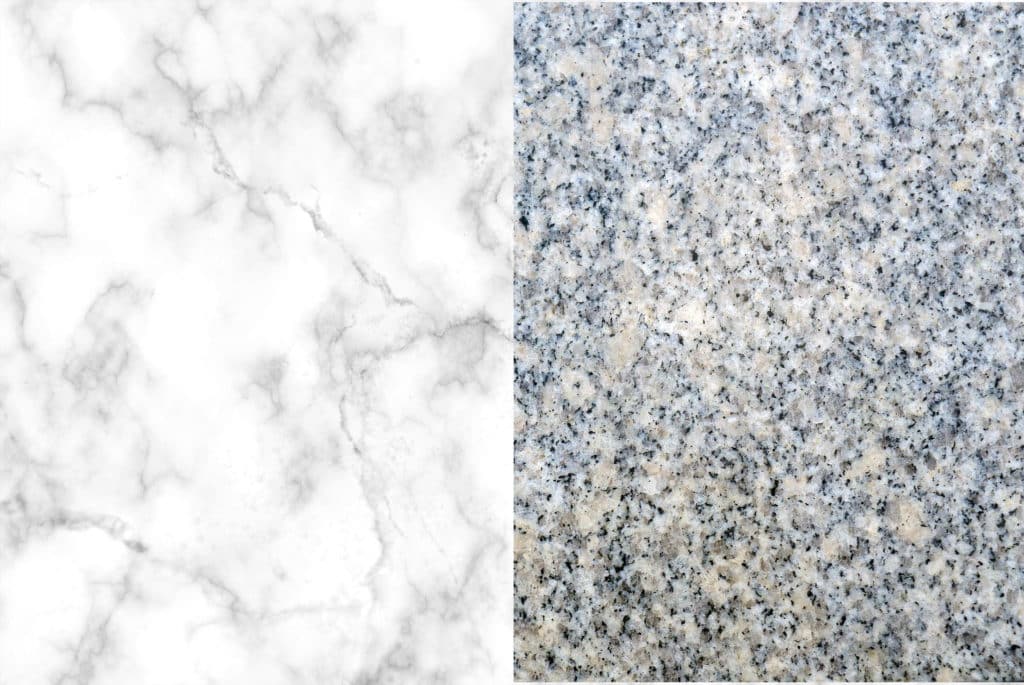
These products offer several advantages that make them a desirable choice for homeowners, including:
- Exquisite visual appeal with unique veining patterns;
- Heat-resistant, making them suitable for kitchen use;
- Cool surface, which is ideal for bakers and dough preparation;
- Long-lasting and durable with proper care;
- Addition of value and elegance to your home, making it easier to be sold in the future.
The Disadvantages of Marble Countertops
While these slabs have numerous benefits, they do come with a few drawbacks, which become more noticeable as time passes. These include:
- Natural porosity, which makes them prone to stains and spills;
- Acidic substances can cause etching and dullness;
- Regular sealing and maintenance;
- Relatively softer than other stone materials, making them susceptible to scratches and chips.
Speaking of other stone materials, it’s common for people (as directed by professionals) to compare marble to its natural cousins, such as granite and quartzite – which are, in some ways, more accessible. In the long run, you’ll notice that marble presents some delicate features that might hold them back, and the initial price plays a huge role in this.
However, as you’ll see, marble also has a great cost-benefit that transcends economic values, hence its ever-growing popularity when compared to granite, which has seen a dip in demand in the last few years.
Read our complete guide on granite countertops here.
The Many Colors of Marble
Did you know that marble countertops come in a wide range of colors, each with its unique characteristics? It’s not unusual for people to think that marble only comes in its classic, white version with vibrant beige patterns; if you’re not familiar with natural stones, it’s important to know that there is a color suited to every aesthetic preference. Check out some of them below:
- White marble: Although white is not a complex color, there are several white marble stones available on the market today. When people think of marble, the first thing that comes to mind is probably Carrara – which ranges from a bluish-gray to pristine white – or Calacatta, a much brighter surface with thicker veins and darker hues.
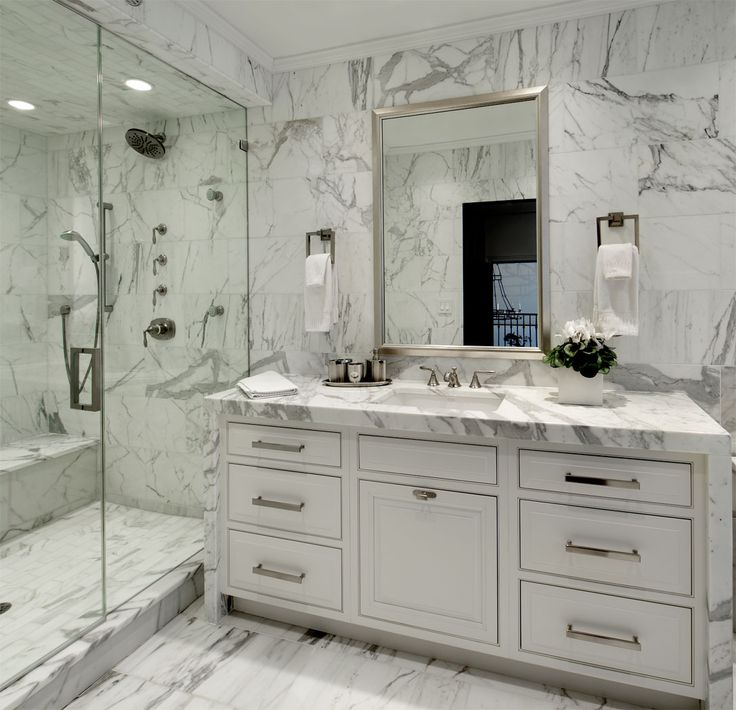
- Black marble: There’s no doubt that black is the color of modernity. Dark stone slabs have this simplistic, almost mysterious look that makes even the most ordinary spaces glow with intensity, and yet they’re far from extravagant.
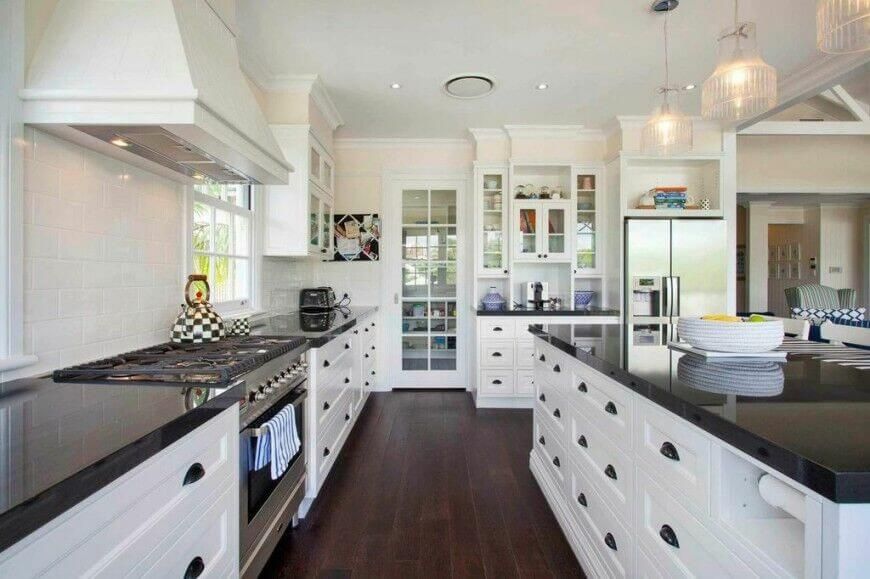
- Grey marble: Given how marble is a metamorphic rock primarily composed of calcite or dolomite minerals, which are responsible for its characteristic crystalline structure and veining patterns, the specific shade of grey might vary depending on the composition and geological factors involved in its formation. It’s very minimalistic and neutral.
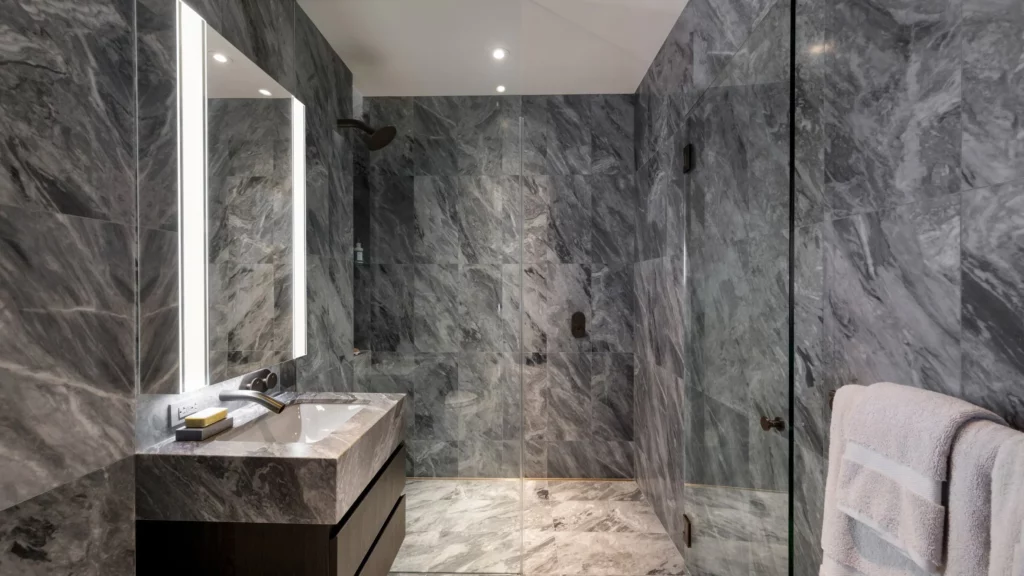
- Brown marble: Brown marble countertops are a beautiful, durable, cozy, and down-to-earth option for people looking to add a touch of class to their homes.
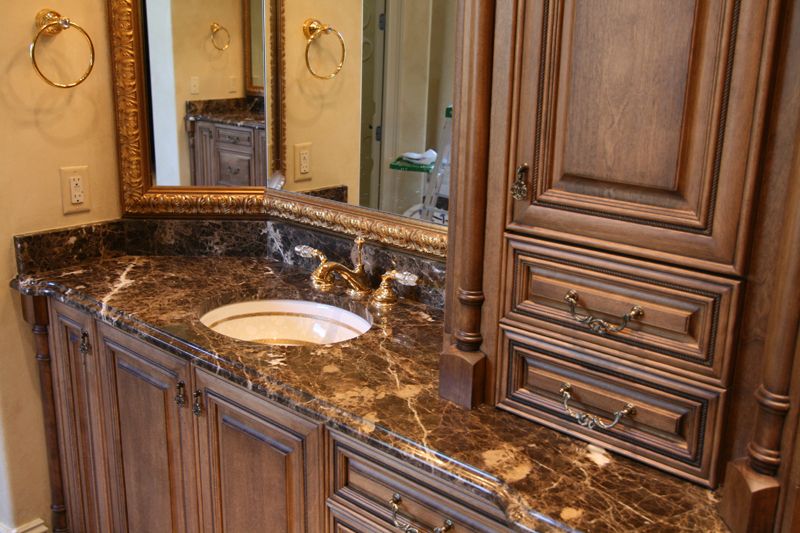
- Green marble: Green marble is decisive – almost ground-breaking when you think about it. We don’t see green stones very often – that is mainly reserved for valuable jewelry like emeralds, for instance – so they do draw attention.
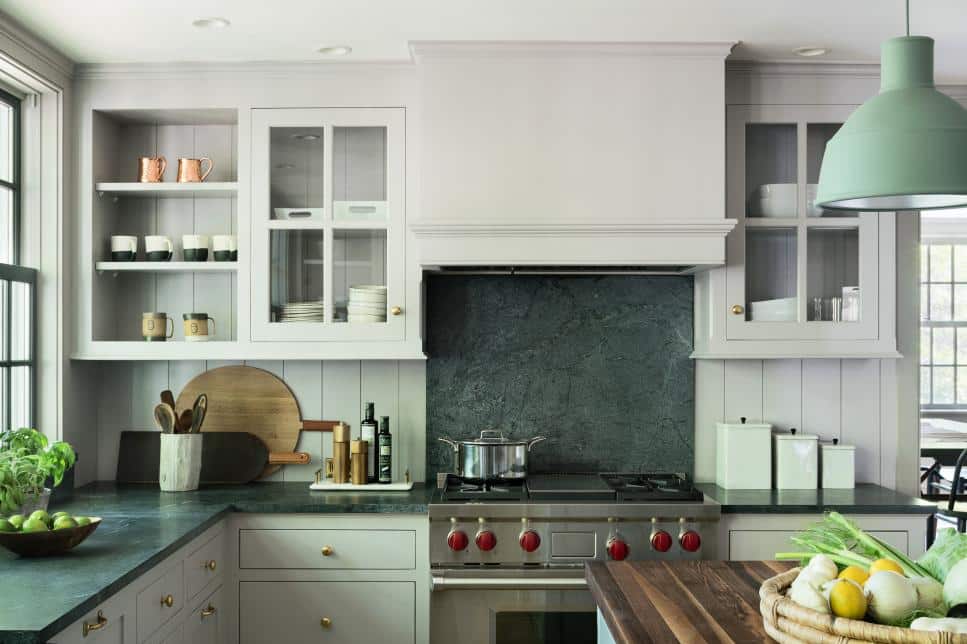
- Blue marble: Blue marble is stunning – especially in beachy areas, but they do draw attention when installed in the wrong place. However, that doesn’t mean your kitchen island or bathroom vanity can’t be improved by them – in fact, blue pairs up well with the neutral and plain tones that most American houses share, such as white cabinets and flooring.

- Pink marble: As you may imagine, pink marble is relatively rare when compared to traditional white, dark, or gray marble slabs. This is due to the unique conditions required for the formation of the pink color, which makes it less common than other types of marble and raises its price on the market, as it is typically more expensive than similar products.
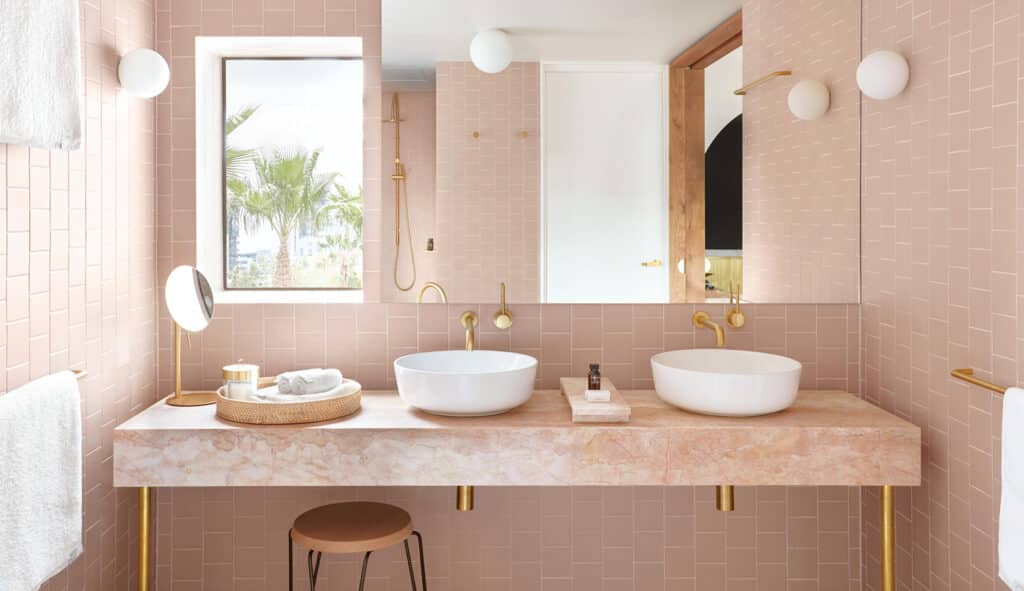
The Average Cost of Marble Countertops
So, let’s talk about prices. Marble can vary significantly in price depending on factors such as the type of marble, its rarity, and the size of the project. On average, you can expect to pay between $60 to $150 per square foot, including installation services.
However, it’s important to note that more exotic marble varieties can exceed this range – and the aforementioned colors are directly related to this matter. Therefore, when considering the cost, it’s essential to factor in the long-term value and durability of marble, making it a worthwhile investment for many homeowners.
Read as well: Kitchen Countertop Finishes – What You Need to Know
Cheaper Options for Marble Stones
If the cost of marble countertops exceeds your budget, there are alternative options that can replicate the look of marble, although not its physical longevity. That said, as professionals in the industry, we don’t suggest these products by any means, considering they don’t present either the cost-benefit or the appeal of natural stones.
Laminate countertops, for instance, do offer an affordable solution, with various designs imitating the appearance of marble at a fraction of the cost, but are harder to install. Painted countertops, created using specialized paints and sealants, can also provide a marble-like finish, but they don’t last for long. Finally, faux marble countertops, crafted from materials like quartz or solid surface, mimic the look of marble with enhanced durability and stain resistance – making them a practical choice for busy households – but can break with ease.
Needless to say, any alternative material won’t show the brightness or glossy elegance of natural marble slabs. If you value originality and luxury, even granite or quartzite can fulfill your needs better than cheap solutions!
How to Care for Marble Countertops
As mentioned, proper care is essential to maintain the beauty and longevity of marble countertops. Here are some essential care tips to make the best out of this investment:
- Clean spills immediately: Wipe up any spills promptly to prevent staining; use a soft cloth or paper towel and a mild, pH-neutral cleaner specifically formulated for marble surfaces.
- Avoid acidic or abrasive cleaners: Harsh chemicals and abrasive cleaners can damage the surface of marble; opt for non-abrasive, marble-safe cleaners to preserve its shine.
- Use cutting boards and trivets: To prevent scratches and heat damage, always use cutting boards for food preparation and trivets or hot pads for hot cookware.
- Regularly seal the surface: Marble is porous, so it’s crucial to apply a high-quality marble sealer regularly; follow the manufacturer’s instructions for proper sealing frequency (more on that in a bit).
- Use coasters and placemats: Protect your marble countertops from potential stains caused by glasses, mugs, or plates by using coasters and placemats.
- Avoid placing heavy objects: Heavy items can cause cracks or chips in marble, so be cautious while handling heavy appliances or objects – and consider using additional support.
How to Seal Marble Counters

Sealing is a pivotal factor in preserving the lifespan of a porous stone, as in the case of marble. This is an essential step to protect your countertops from staining and permanent etching – and we recommend you do this at least twice a year.
Nevertheless, professional assistance is always a good idea here. DIY enthusiasts will want to find the best marble sealer at the nearest hardware store and apply it themselves, but any mistake might cause a waste of budget and a wrong layer of protection. If you do have some previous expertise and still wish to go along with it, though, here goes a general guide on how to seal marble counters:
- Start by thoroughly cleaning the marble surface with a mild, pH-neutral cleaner. Remove any dirt, grime, or residue;
- Ensure the marble is completely dry before applying the sealer. Use a soft cloth or allow sufficient air drying time;
- Pour the marble sealer onto a clean, lint-free cloth or sponge. Begin applying the sealer in small, circular motions, covering the entire surface. Allow the sealer to penetrate the marble for the recommended time;
- After the recommended time, use a clean, dry cloth to wipe off any excess sealer from the surface. Ensure no streaks or residue are left behind;
- Then, allow the sealer to cure for the recommended time, typically 24 to 48 hours. Avoid placing objects or using the countertop during this period;
- Depending on the type of sealer used, repeat the sealing process as recommended by the manufacturer. Generally, it’s advised to reseal marble countertops every 6 to 12 months.
Contact Eagle Stones today for high-end marble countertops!
So – has your heart been conquered by marble yet? We certainly hope so!
If you’re still having a hard time trying to decide what kind of stone you’d like, you can always look for a specialist’s opinion! Experts already know what each kind of stone is good for and what they could bring to your home aesthetics, so their opinion can be very valuable to you.

Here at Eagle Stones, we specialize in stone countertops – especially marble, which we have available across an expensive catalog you can see in person. Just fill out our form, and we will send you a specialist to help you and give you a free estimate! We also handle many other kinds of stone, by the way, so we can help you pick the best fit for your home.
We’ll be waiting for you.

